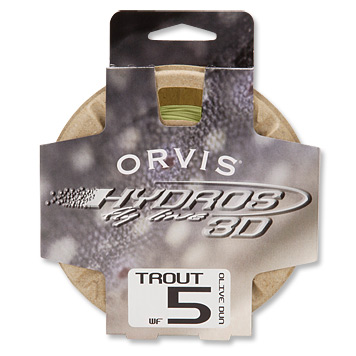Mayflies, hoppers and our new fly fishing shop
It’s been a long time between newsletters, but we’ve had good reason: the arrival of our first baby, a little boy named Sidney, and the opening of our new fly shop in Launceston, FlyShop 1864 (at 45 Cameron Street, Launceston.
Onto the fishing report…
Tasmania got off to a great start in spring, with the Macquarie River featuring the best red spinner hatches since the 1960’s. What a difference three wet winters make! On top of the red spinners, we had loads of excellent black spinner falls on the South Esk, and some great creek fishing in the north-east. All-in-all the fish size this year is up about 30% on average, due to the extra rain and flood foraging to be had. This includes trout throughout the Western Lakes, where fish numbers have also doubled in some of the more seasonal catchments, for example the Christys Creek area.
The fishing prior Christmas saw some excellent hatches of mayfly on the famed Little Pine Lagoon, as well as Woods Lake and a couple of the Nineteen Lagoons. Down on the rivers and the South Esk continued to fish exceptionally well, though more new anglers were to be found, practicing in preparation for the recently held Commonwealth Fly Fishing Championships. Again the north-east creeks fished very well, and timing our visits to coincide with good water levels and warm water-temperatures was the key. The Meander upstream of Deloraine also proved consistent with caddis and mayfly hatches, with our Scruffy dry flies and Pheasant and Ice Nymphs accounting for many of our trout. Both patterns will be added to our webshop next month, along with more than 30 more of our new custom ties.
February was a hard month for fly fishing in Tasmania, as the huge weather systems crossing mainland Australia sent consistent easterlies throughout the state. This made the fishing quite difficult, with patchier hatches, and fickle fish, as competitors in the Commonwealth Fly Fishing Championships found out for themselves.
The weather pattern has now settled, and we are experiencing some great hopper fishing on the Macquarie, Lake, Brumbys, Meander and South Esk rivers. The 2nd of March also marked the first day of serious autumn mayfly hatches on the lowland rivers, whilst last weekend saw excellent ant falls on Brumbys Creek. The sight fishing has been great, and we expect an excellent mayfly season through till late April. If you would like to pop down to Tassie for some end-of-season sight-fishing, then send us an Email. We’ll pick you up at the airport, and have you fishing within 30 minutes!.
Our new FlyShop – FlyShop 1864, 45 Cameron Street Launceston
This season saw Simone and I open our flyshop in Launceston, which we are very excited about. We’ve named it in honour of the year that trout were first hatched in Tasmania–1864. Our shop is the first and only Orvis accredited dealer in Tasmania, which was a great coup. Orvis are the largest fly fishing company in the world, and have been around since 1856. In addition to Orvis, we stock a number of niche brands including Recycled Waders, whom make great fishing packs and bags from old recycled waders, Rio flylines, Maxima lines, Peter McKean Cane Rods, and a large range of internationally-competitive prices on fly tying materials.
A lot of our stock is already online, and available through our webshop at www.flyshop1864.com.au, with the complete range online by May.
Product Reviews and News – Orvis Hydros flylines, our custom 1864 trout flies & new Ice Dubbing
New Orvis Hydros Flylines
For years now, Rio and Scientific Anglers have been the primary choices for flylines in Australia. We love the Rio lines, and have used them for years, however our line of choice has just changed. Released in January 2012, the new Orvis Hydros flyline range is our new go-to flyline of choice. Their top-of-the range Hydros 3D textured line, which we’ve used for a couple of months now, has proved its worth as the best sightfishing line around. It floats brilliantly, the coating enables the line to shoot as good as, if not better than anything on the market, and the textured coating avoids all of the previous problems of textured lines: excess noise, finger cutting and poor roll casting. At $104.95 it’s also great value, and perfect for medium-fast, to fast action rods such as the Orvis Helios, and the Sage One. If you prefer slower action rods, then the regular Trout Taper is the line to choose. With a traditional coating and taper, and a high-float tip, this is the perfect match for most Orvis Helios mid-flex rods, Winston tapers, cane rods, and creek fishing. Again they are a great value line. Fly Line and Backing
Custom 1864 Trout Flies
One of the points of difference with our flyshop is that we tie all of our own fly patterns for the shop. We don’t purchase from Asia or Africa, where a child could be forced to tie flies for little return, and what’s more, our flies are developed, tried, tied and tested by myself and our RiverFly team, day-in and day-out. The results are the most functional, innovative and effective flies available for Australian conditions. By May we plan to have all our patterns available on our webshop (including a few of our previously ‘secret’ patterns). We also tie to order, so feel free to send us an Email with your request.
Orvis Ice Dubbing
One of the great new materials we are stocking is Orvis Ice Dub. Anyone that knows our fly patterns would realise that UV-reflective materials play a large role in effective patterns. Up until now we have used and recommended Glister as the synthetic dubbing of choice, but we’ve come across a better substitute. Orvis Ice Dub has all the light-reflective properties of Glister, and in fact looks exactly the same, however you’ll find it softer and easier to use. The colour range is great, and we have 18 colours in stock. Fly Tying Dubbing

<h3″>Fly fishing tips – don’t hold the fly, powdered floatants and leader lengths
- Many times I see anglers holding their dry fly whilst waiting to spot a rise. This typically crushes the fly, and hinders its performance. My suggestion is to instead hold the tippet, just above the fly, leaving everything ready to go and easily at hand.
- After landing a fish, powdered silicone floatants are ideal for drying out a slimed-up fly. Our favourite is Loon Top Ride Floatant, however Frogs Fanny has a lot of devotees, as does the identical (and well priced) Orvis Float Dust.
- Changing leader lengths to suit the fishing can help to catch more fish. When fishing heavy flies such as grasshoppers, or fishing in the wind, I recommend a leader of around 9 feet. When more subtle hatches are on, such as small mayfly and ants, I like to move up to a 12 foot leader. They cast with a similar effort, however the added length gives a greater margin for error should the cast go astray.
Wilderness Huts – Opening in October 2012
Lastly but importantly, stay tuned for our next newsletter, where we will be announcing the completion of our new wilderness huts! This has been the most exciting project to be involved in, and is the fruition of more than 3 years of hard work. Spaces are limited for the 2012/2013 season, so if you are keen to try Australia’s best wilderness fly fishing, then be sure to let us know.
Thank you from Daniel & Simone Hackett.

